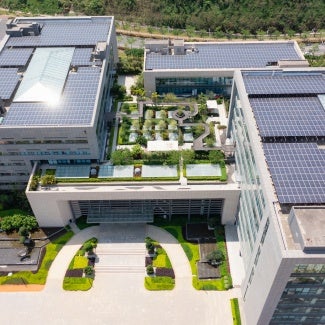Environmental Product Declaration
April 13, 2018
An Environmental Product Declaration® (EPD) is a report that documents the ways in which a product, throughout its lifecycle, affects the environment, including resource use, greenhouse gas and other emissions, waste generation, and more.
What is an EPD?
An Environmental Product Declaration® (EPD) is a report resulting from a life cycle assessment (LCA) based on standardized product category rules (PCR). An EPD is initiated by a product manufacturer and documents the ways in which a product, throughout its lifecycle, affects the environment. The LCA informing an EPD details product information related to resource use, greenhouse gas and other emissions, waste generation, and other environmental impacts throughout the product’s life cycle. EPDs may also include other environmental data, including information about the company’s overall work in the environment and social responsibility, or on product development.
EPD application to practice
EPDs provide a window into the environmental impacts of a product, allowing consumers and designers the opportunity to reference these factors when selecting materials. Utilizing products with EPDs can help to meet the requirements of certain building performance certifications, such as LEED v4.
EPDs also contribute data for professionals to calculate a whole-building LCA. Understanding how that material contributes to the building’s carbon footprint can help architects and designers evaluate the impacts of a single material and relevant alternatives. AIA offers a Guide to Building Life Cycle Assessment in Practice to help practitioners through the process. The Carbon Leadership Forum will publish its own whole-building LCA guide in early 2018.
An EPD is an important disclosure document. AIA’s white paper on materials risk recommends that practitioners reference disclosure documents, but that they refrain from interpreting them without the guidance of an expert. Designers should either consult with a materials science professional to evaluate the information, reference guidance to meet standards included in the Applicable Certifications section below, or qualify products based on whether they do, or do not, offer an EPD.
EPD governing organization
LCAs are performed by expert LCA Practitioners. EPD Program Operators verify the LCA and produce the EPD document. There are multiple EPD program operators, all of whom must operate in accordance with the International Organization for Standardization (ISO) 14025 standards. A good starting place to identify North American program operators and EPDs is the Program Operator's Consortium.
EPD costs, standards, availability, & more
Standards used:
- ISO 14025 for a Type III EPD
Verification levels and availability: Details publicly available for:
- First-party verifications, or claims made by the manufacturer: Companies compile the information for an EPD themselves or can work with independent expert consultants.
- Second-party verifications, in which the party has a financial interest in the transaction: Not applicable to EPDs.
- Third-party verifications, or an independent assessment that specific requirements have been met: Before registration and publication by the International EPD System, EPDs must be verified by either an accredited certification body or a recognized individual verifier.
Product CSI division and types:
- EPDs are applicable to all product CSI divisions and types, though a product category rule (PCR), which sets standards for the life cycle assessments and EPD requirements for a defined category of products, must exist before an EPD can be developed.
- PCRs allow for review and comparison of different environmental product attributes among products in a defined category. They define the parameters for conducting a life cycle assessment for a product group and include requirements for the resulting report, the EPD.
Costs:
- Costs involve performing the life cycle analysis (LCA) for the product, compiling data into the EPD format, and verification of the data.
Scope:
- Limited to the product level, and to information related to environmental impacts.
Applicable certifications:
- Applicable to: LEED v4, BREEAM, Green Globes. EPDs can also contribute to LBC indirectly by informing embodied carbon calculations
- Not Applicable to: WELL, LEED 2009
Additional resources
Building Green’s EPD FAQ article provides insight into common questions on the reporting format.
The International EPD System provides information on using EPDs, how they are compiled, and resources, such as directories of LCA consultants and independent verifiers.
The American National Standards Institute (ANSI) sponsored an independently conducted examination of EPDs and other environmental transparency programs.



